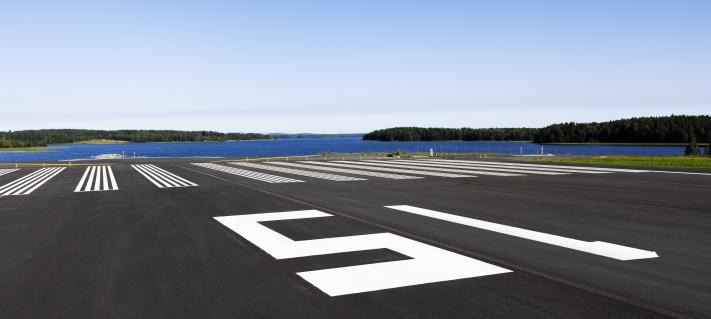Good environmental work is part of Finavia’s corporate responsibility. The Sum of Good Things article series highlights details of Finavia’s responsibility work. This article focuses on waste management at Helsinki Airport.
Helsinki Airport handled more than 20 million passengers last year. A total of 2,241 tonnes of waste was generated on Finavia property over the course of the year.
“The increasing number of passengers will naturally increase the amount of waste generated at the airport, but our waste sorting is constantly improving. This year, for example, an experiment has been started on sorting plastic from other waste,” says Service Manager Katri Koivukoski from Finavia’s real estate and energy services.
Almost half of the airport waste is conventional waste, with clear processes for recycling. Restaurants and shops mainly produce waste that can be easily reused.
“Energy waste is burned at Vantaan Energia’s incineration plant and used as energy for homes and workplaces. Cardboard, recycled glass, recycled paper, recycled metal and biowaste are utilised as raw materials,” says Koivukoski.
Most airport waste is utilised
Most of Helsinki Airport’s waste ends up being recycled or used as energy. In 2018, 34% of all waste was recycled as materials and 43% was burned for energy. Only 0.39% of hazardous waste goes to a landfill. In this case, landfill means high-temperature combustion that cannot be used as energy. These products include solid aerosol waste, paint waste and solid oily waste. Heavy metals, batteries and lubricating oil are utilised as raw materials.
Food waste left over from international flights is collected separately and incinerated at the waste power plant to prevent the spread of disease. Finavia does not participate in airlines’ waste management.
Garbage cans are emptied up to six times a day
At Helsinki Airport, waste management is a 24-hour job. Garbage bins are emptied at least three times a day in the gate area and up to six times a day in the departure hall.
The amount of waste is constantly monitored. Although the emphasis is on improving sorting, the airport and its partners also try to minimize the amount of waste generated. One surprisingly effective detail is using washable cloth rolls instead of paper towels in the toilets.
“Hand towels may seem like a small thing, but they can really reduce waste,” says Katri Koivukoski.
Passengers can help with sorting
When there is a rush at the airport, more waste goes to mixed waste. Sorting is also partly linked to cultural factors: in some countries, self-sorting is a normal part of everyday life, while in others it is not customary. The aim is to guide passengers through sorting, for example, by clear signage.
Waste management is also a matter of service design and an integral part of airport planning. According to Katri Koivukoski, increasing waste sorting has been taken into account in the renovations of Helsinki Airport, such as building the new Aukio area.
“We are about to launch a bigger project to further develop waste management. Better sorting is in everyone's interest,” says Koivukoski.
Here's how passengers can do their share in recycling:
-
Empty a drinking bottle before putting it in trash. The drier the energy waste is, the easier it is to incinerate for energy.
-
Read and follow the instructions at the waste points. For recycling, sorting is vital, and sorting waste at the source facilitates further treatment.
-
Opt for eating at restaurants. Meals served from a plate usually produce less waste than purchased packaged foods.




